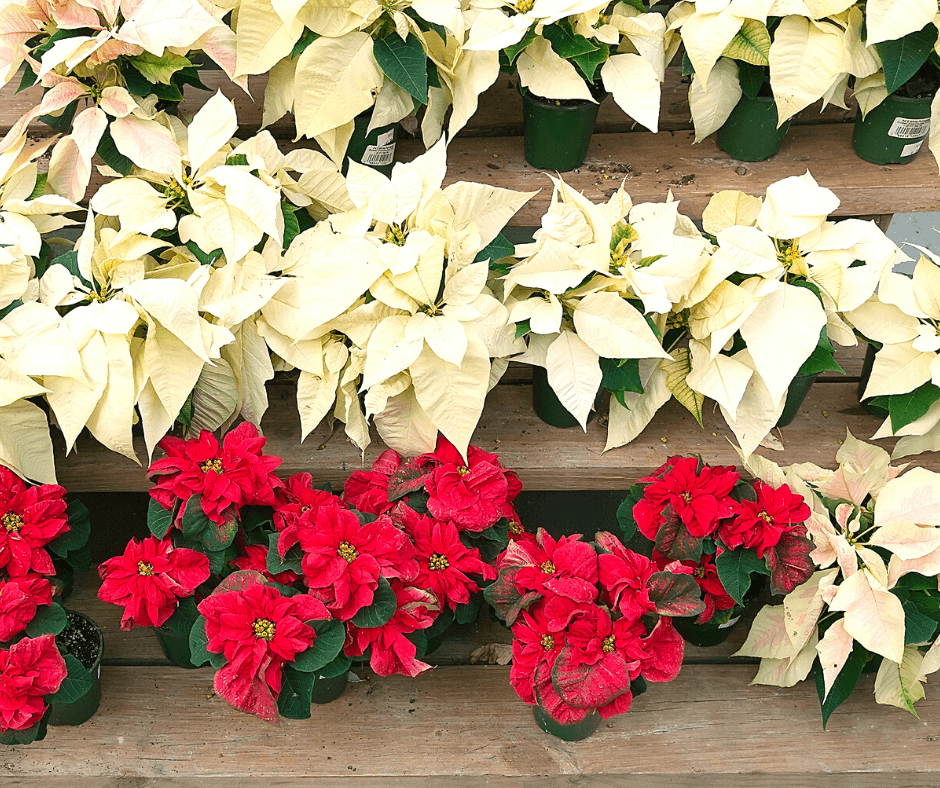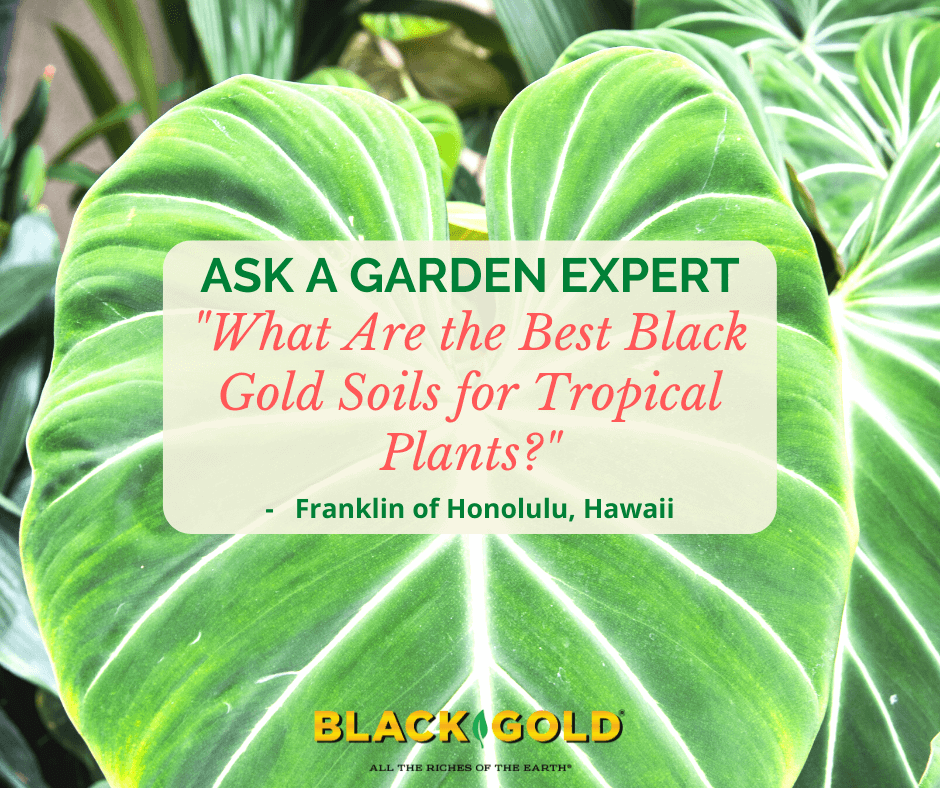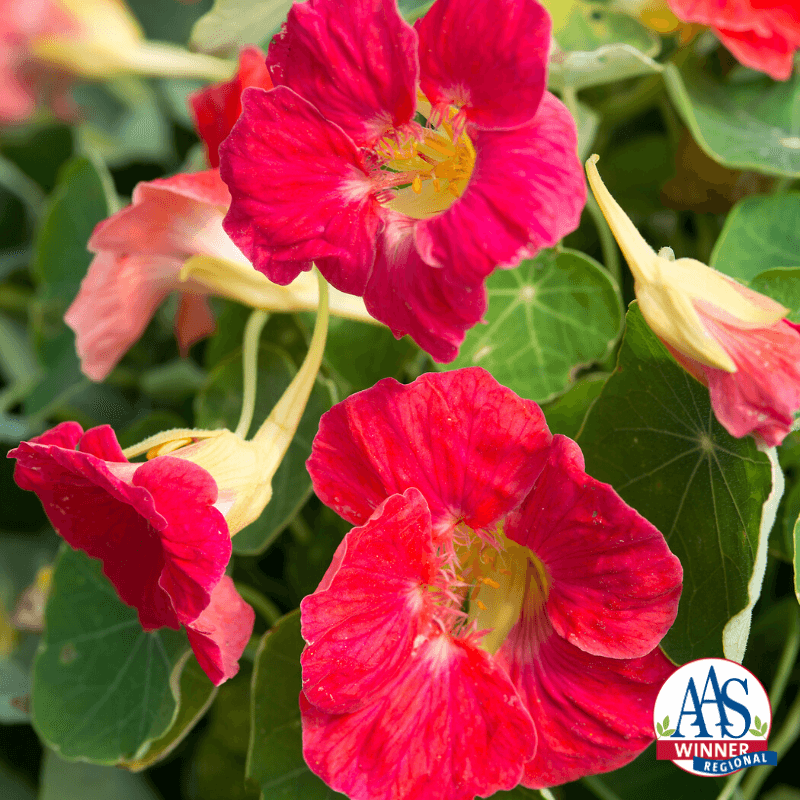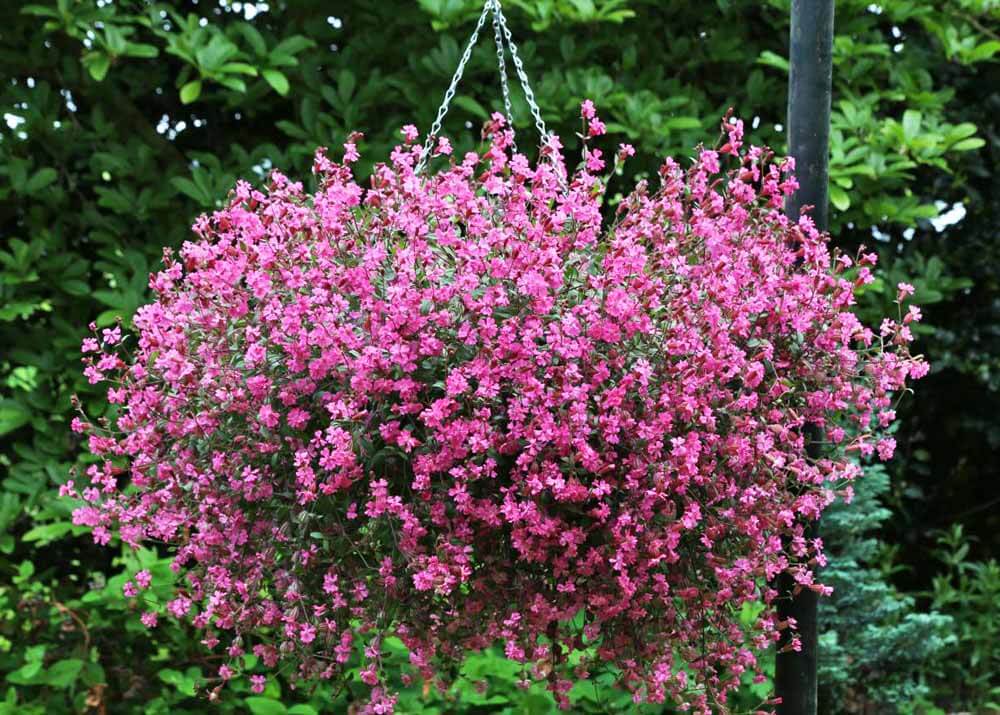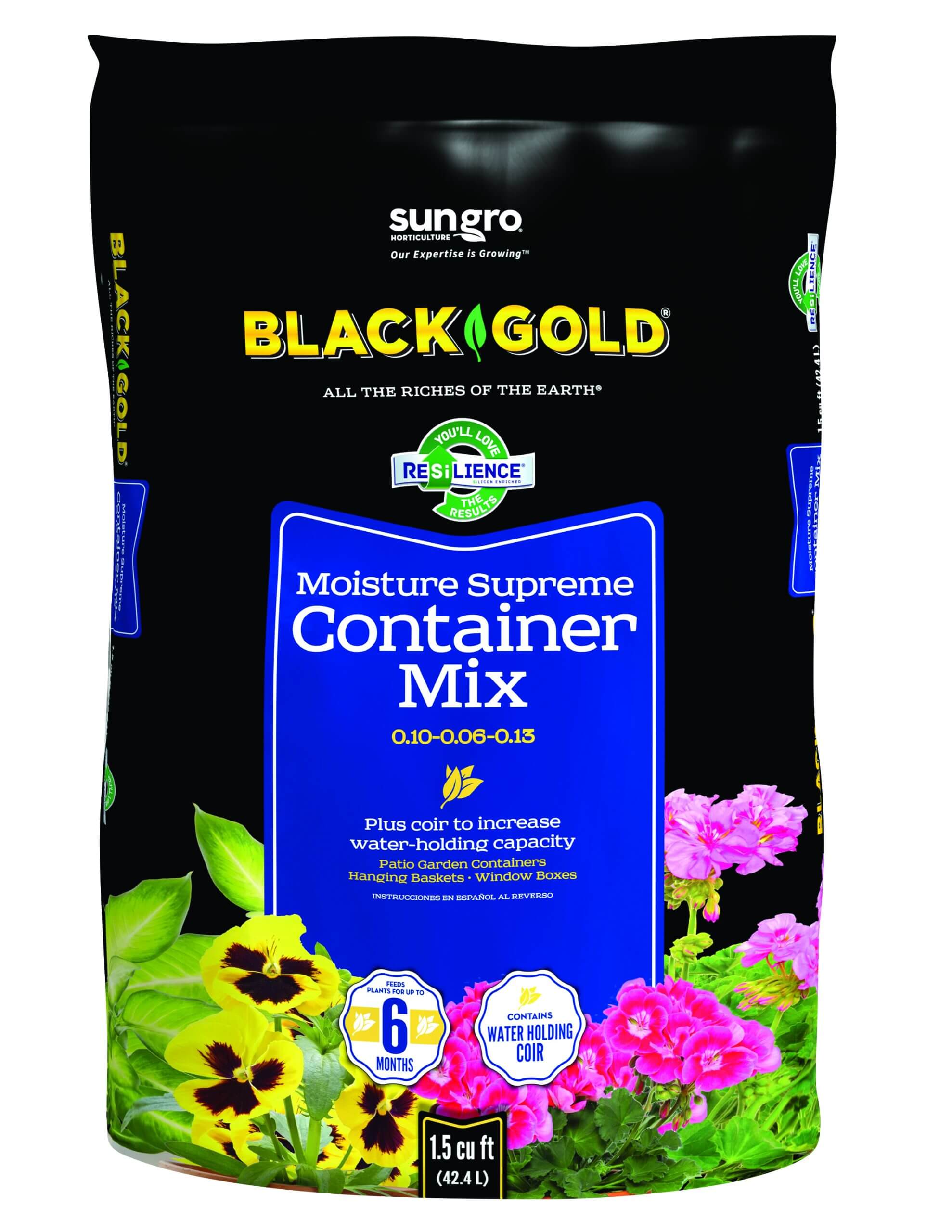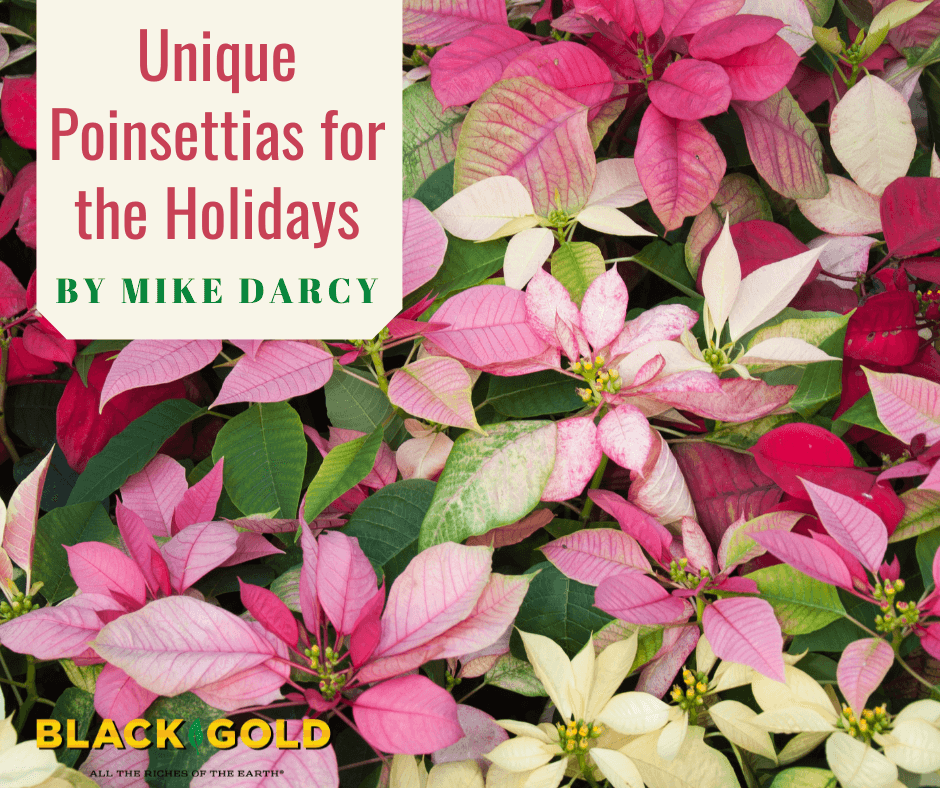
‘Jingle Bells’, ‘Winter Rose Red’, ‘Whitestar’, ‘Cortez Burgundy’, etc., are just some of the names you might find on an exciting new poinsettia (Euphorbia pulcherrima) plant this year. There is probably no flower more associated with a holiday in the United States than the poinsettia is for the Christmas and New Year season. The red poinsettia certainly denotes the Christmas holiday season, but breeders have come up with lots of new, unique varieties that stand out from the mass displays of traditional poinsettias that you usually see at garden centers or grocery stores.
About Poinsettias

Poinsettias are winter-flowering shrubs that are native to Mexico, but the plants we see in stores are quite different than the tall, roadside plants seen south of the border. They were introduced to the United States in the 1820’s when Joel Roberts Poinsett, who was the first US Ambassador to Mexico, sent some cutting to his home in South Carolina. It was not an instant success as a potted plant because the flowers only lasted a few days.
With the new breed of poinsettias that we see today, the colorful bracts (colorful petal-like leaves) will last long past the holiday season. While the bracts are often called the flowers, the actual flower is in the center of the bract. Botanically speaking, it is Euphorbia pulcherrima, a member of the Euphorbia family, which is noted for often having a milky sap in the stems and leaves. This sap was considered poisonous for some time, but recent research has shown it is much less toxic than once believed. Some people might be allergic to it from skin contact and have a mild reaction and it can cause burning if there is eye contact. From reports that I have read, it is said to taste horrible and so it is unlikely a child would eat much. (Click here for more details about poinsettia toxicity from the Mayo Clinic.)
In their native southern Mexican habitat, the plants are tall shrubs (10-12 feet) with winter blooms that have smaller red bracts. Today, red poinsettias are the most popular and account for about 75% of sales, but plant breeders are constantly trying to create unique and more vibrant colors, so the color range continues to expand.
New Poinsettias

After many years of plant breeding, poinsettias are now shorter and more compact, which makes them ideal for most homes. Plant breeding has also given us more choices for color, and the colorful bracts look good for weeks. I have seen gardeners overwinter these perennial shrubs in a bright home or greenhouse, set plants outside in the spring, and bring them indoors again in fall. Sometimes it also pays to give the plants a midsummer trim. If done properly, they will bloom again in winter, though flowers may appear after December, on occasion.
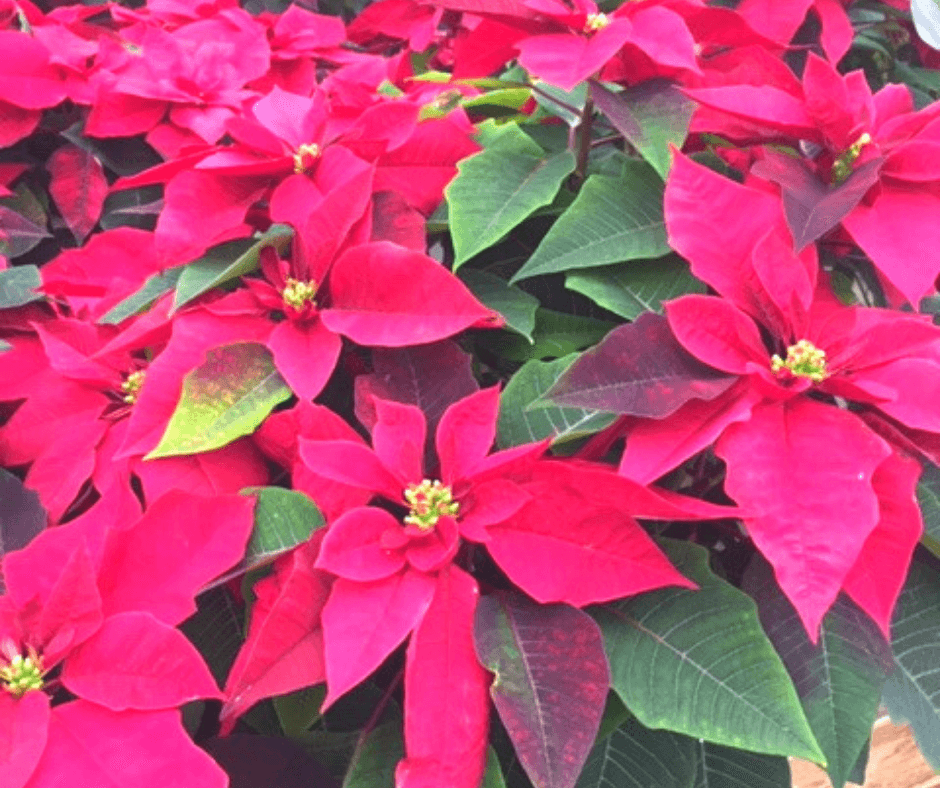
Visiting a grower recently, I was amazed at the variety of unique poinsettias. The large bracts of ‘Jingle Bells’ were red with lovely white speckles across them. New rosette-style poinsettias, with smaller rose-like blooms have become popular, and ‘Winter Rose Red’ is a lovely red one that I saw. The bright ‘Whitestar’ has huge brilliant ivory bracts that really stand out, and the deepest burgundy red, ‘Cortez Burgundy’, was on the opposite end of the poinsettia color spectrum. ‘Christmas Feelings Pink’ had all large blooms with pink bracts whereas some plants have multicolored bracts, such as ‘Christmas Beauty Marble’ (image at bottom), which had pink bracts that were outlined in cream.
Growing Poinsettias
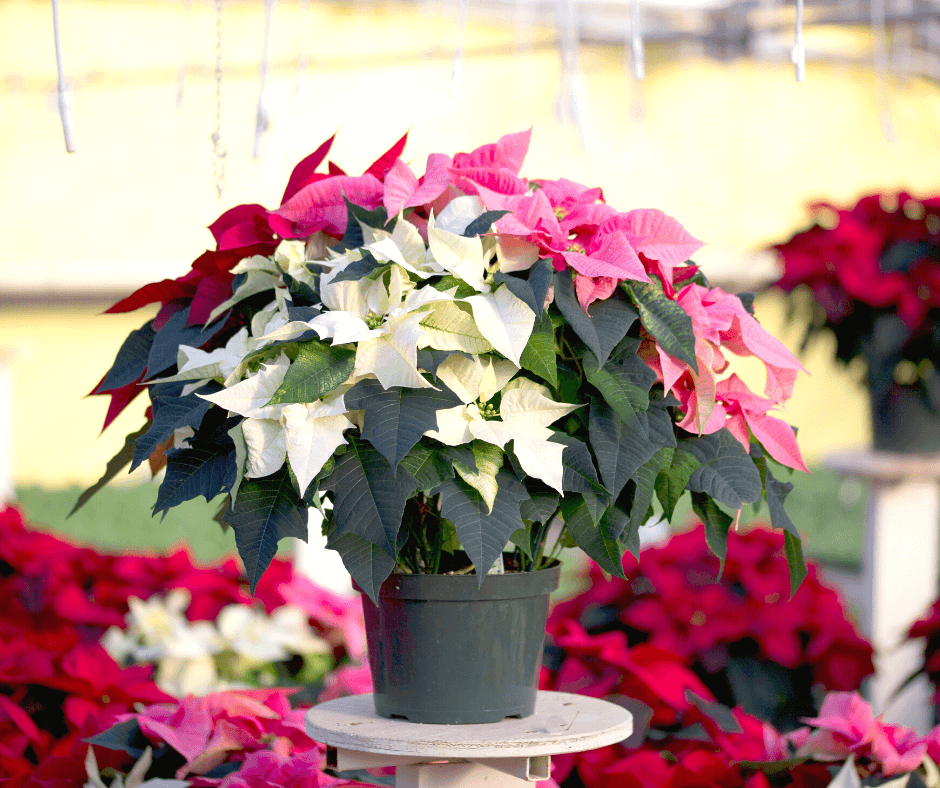
When purchasing your poinsettia, make your poinsettia purchase the last stop before reaching your home because they do not like cold weather. The sooner you can get the plant out of your car and into your home, the better. Select an area that has uniform bright light and keep it away from forced air heater vents. The pots are often wrapped in a foil sleeve, which should be removed when watering. Place the plant in a sink and give it a thorough soaking. After the water has drained, put the sleeve back on.
Your poinsettia will probably last well past the holiday season. If you don’t want to keep yours, before throwing it in the compost bin check with a senior living center to see if there is interest. Gifting it, even after the holidays, might provide a resident with some much-needed happiness.
